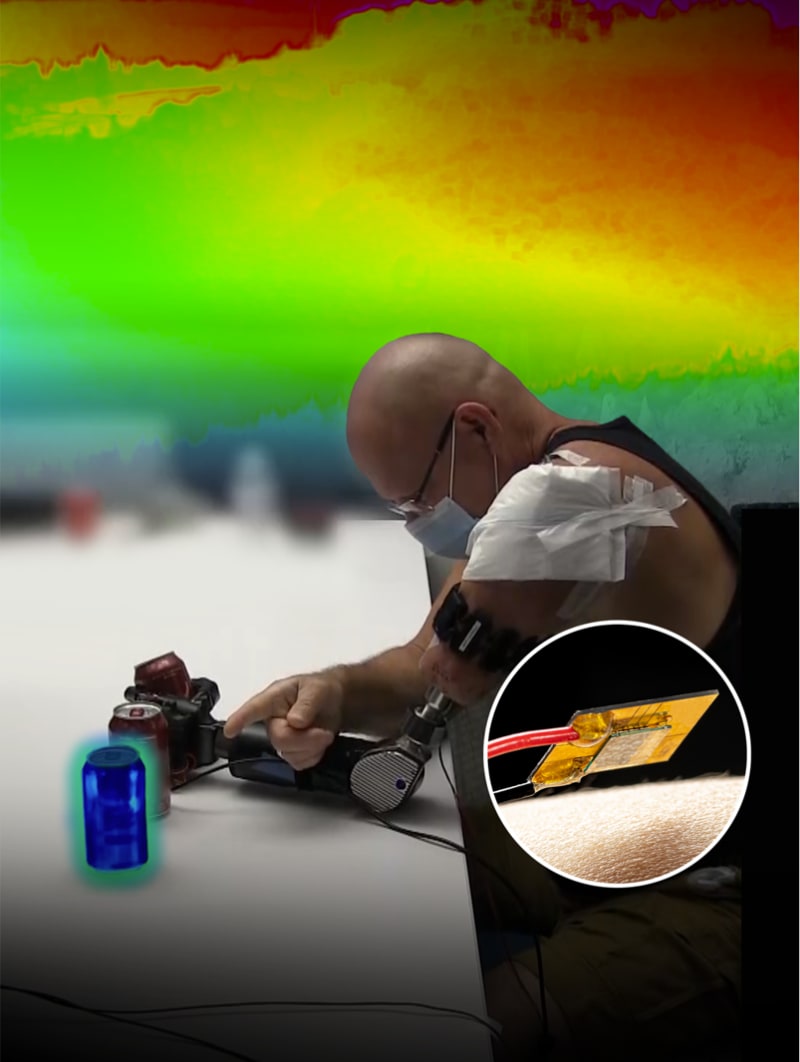

Physical touch plays a crucial role in a person’s ability to communicate and perceive the world around them. The United States Government, health care developers, and private industry have long sought to develop state-of-the-art prosthetic limbs that can restore near-natural hand and arm control for people living with loss of limb and limb differences. Researchers have discovered that the ability to restore that sense of touch is possible through skin stimulation, but delivering thermal sensations in a fast, energy efficient, and comfortable manner was yet to be realized – until now.
Developed by the Johns Hopkins Applied Physics Laboratory (APL) researchers, the wearable thin-film thermoelectric cooling (TFTEC) device is one of the world’s lightest, thinnest, and fastest refrigeration devices. In a form-factor similar to an adhesive bandage, TFTEC has a high-speed and cooling power density capable of matching the human body’s ability to rapidly sense temperature change, and thus providing intuitive thermal perceptions for those with missing limbs and prostheses. The device can also be applied to deliver temperature sensations to users in augmented reality situations to create more realistic and complex perceptions of touch for surgical and gaming applications.
The TFTEC uses advanced thin-film thermoelectric materials called Controlled Hierarchically Engineered Superlattice Structures (CHESS), a patented technology also developed by APL. CHESS allows electrons to move without significant barriers within the material, leading to high electrical conductivity, while impeding the flow of heat-transporting lattice vibrations, resulting in a significantly higher performing thermoelectric material, and ultimately an extremely small, yet powerful, fast-acting solid-state heat pump.
At roughly 1 millimeter thick, TFTEC weighs only 0.05 grams, and uses almost 1/600th of the material commonly used in today’s commercial devices. These attributes deliver twice the energy efficiency found in other thermoelectric devices, enabling improved battery life – a critical capability for ease of use in wearable thermoelectric devices.
The TFTEC is manufactured using conventional semiconductor fabrication tools like those used in solid-state light emitting diode arrays, ideal for scaling production to manufacture large volumes of the devices for electronics, photonics, healthcare and augmented reality applications.
TFTEC was used in noninvasive neuro-simulation trials of several amputee and non-amputee individuals and elicited cooling sensations in the phantom limb of all participants, whereas traditional thermoelectric technology only did so in half of the participants. Specific to the delivery of thermal sensations in prosthesis, the amputee's prosthetic measured the temperature of an object being touched and transmitted that information to a controller, which then activated the TFTEC to provide the necessary heating or cooling effect to the phantom limb of an amputee. Additionally, each of the participants were more successful finding cold objects and spent less time touching each object as they were searching for cold items, while using the TFTEC, than they did while using traditional thermoelectric devices.
The successful interaction between TFTEC and the human interface demonstrates a significant step towards a reality in which advanced human-machine systems deliver complex neuro-sensory feedback for a variety of applications including prosthetics, virtual reality, pain management, and beyond.
Video
-
Awards
-
 2024 Electronics Category Winner
2024 Electronics Category Winner -
 2024 Top 100 Entries
2024 Top 100 Entries
Like this entry?
-
About the Entrant
- Name:Katie Kerrigan
- Type of entry:teamTeam members:
- Rama Venkatasubramanian
- Luke Osborn
- Jeff Maranchi
- Meiyong Himmtann
- Jonathan Pierce
- Richard Ung
- Katy Carneal
- Robert Armiger


